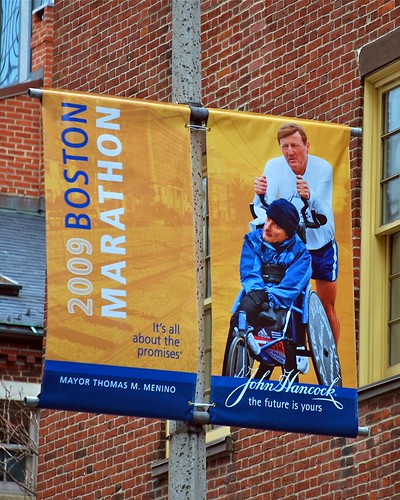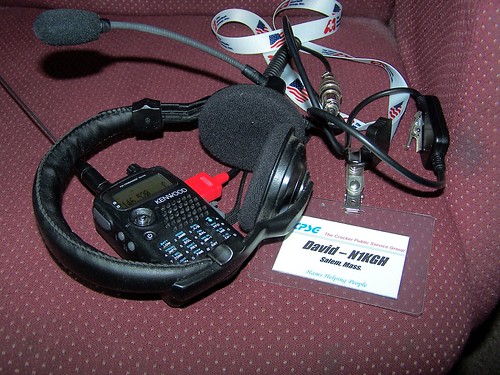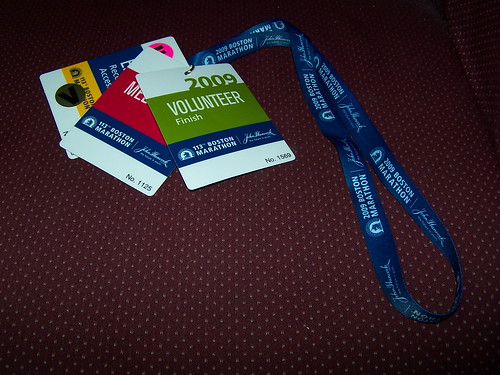[Photo by Paul Keleher]
Last week, I was a Boston Marathon volunteer, and I was in the Salem News! (“They Also Serve: Local volunteers help keep Boston Marathon running”)
I’m a ham radio operator (N1KGH) and have been for 18 years. Amateur radio has a long tradition of public service, assisting emergency officials when regular communications are unavailable. Ham radio is usually mentioned when there’s news of a tornado hitting a community, and radio operators work in shelters and emergency operations centers to get people and supplies moving.
Salem once had amateur radio involvement through our former Civil Defense director, John Smedile, but that faded away when he retired just before I got my license. I’m not currently involved with any emergency planning in Salem.
However, I am a trained severe-weather spotter. And I do volunteer for two big events in the Boston area. One of these is the Marathon.
I work in the finish area. My job, broadly, is to assist the medical team, communicating with others to get supplies and assistance. Many times, I have “shadowed” race officials, helping them get in contact with other officials to get supplies they need, or to provide updates on conditions. (“Don’t send any more runners to Med Tent B, it’s full!”) There are fifty hams on the finish team, working with hundreds of volunteers and medical staff in the area.
This is my radio:
And these are my Marathon credentials:
This year, I spent time in our backup medical tent on St. James St at Park Plaza. (The center of finish line activity is the huge medical tent that takes up a whole block in front of the BPL.) The ham that was there had radio problems, so I offered to relieve him. From then on, I provided updates of our status (“We’ve had 8 beds free for the past half hour.”) Our tent served over 300 runners this day (out of a 50-bed tent; the main tent has 200.)
In past years, I’ve been able to watch the runners; this year, and most years (I’ve done this since 2002) I’m just too busy. Every year I want to bring my camera, but don’t, because photos in the medical tents are a Bad Idea and I spend almost all my time there. I did wave to the women’s wheelchair winner this year, Wakako Tsuchida, as she passed through the main tent.
The ARRL, our amateur radio association, also reported on the Marathon.
I had one question from the News reporter that didn’t make the paper: Why do we use ham radios? Why not walkie-talkies or cell phones?
The BAA did once have Verizon phones for its race officials, up to a few years ago. That got expensive. At one time, early in the history of cell phones, some carriers did provide phones and service to charity events but that never became widespread.
The other reason is range and reliability. The blister-packed GMRS radios you find at Wal-Mart don’t work so great in Copley Square on Marathon Day. You will never see more radios and cellphones in use in that four-block area anywhere in Boston but on Patriot’s Day. Combine that with the numerous transmitters on the Prudential (including Channel 68) and you need a good radio even on a regular day.
Ham radio works at least as well as professional equipment, and with much less infrastructure (we were dispatched out of a trailer next to the medical tent.) More importantly, we have a relationship with the BAA that lets us take this burden out of their hands.
As I write this, I am (and should be) long-rested from my very long day (up at 5 AM to catch the first train to Boston, back at 7 PM) at the Marathon.
But in a week, I’m working again, for the Walk for Hunger:




No comments:
Post a Comment